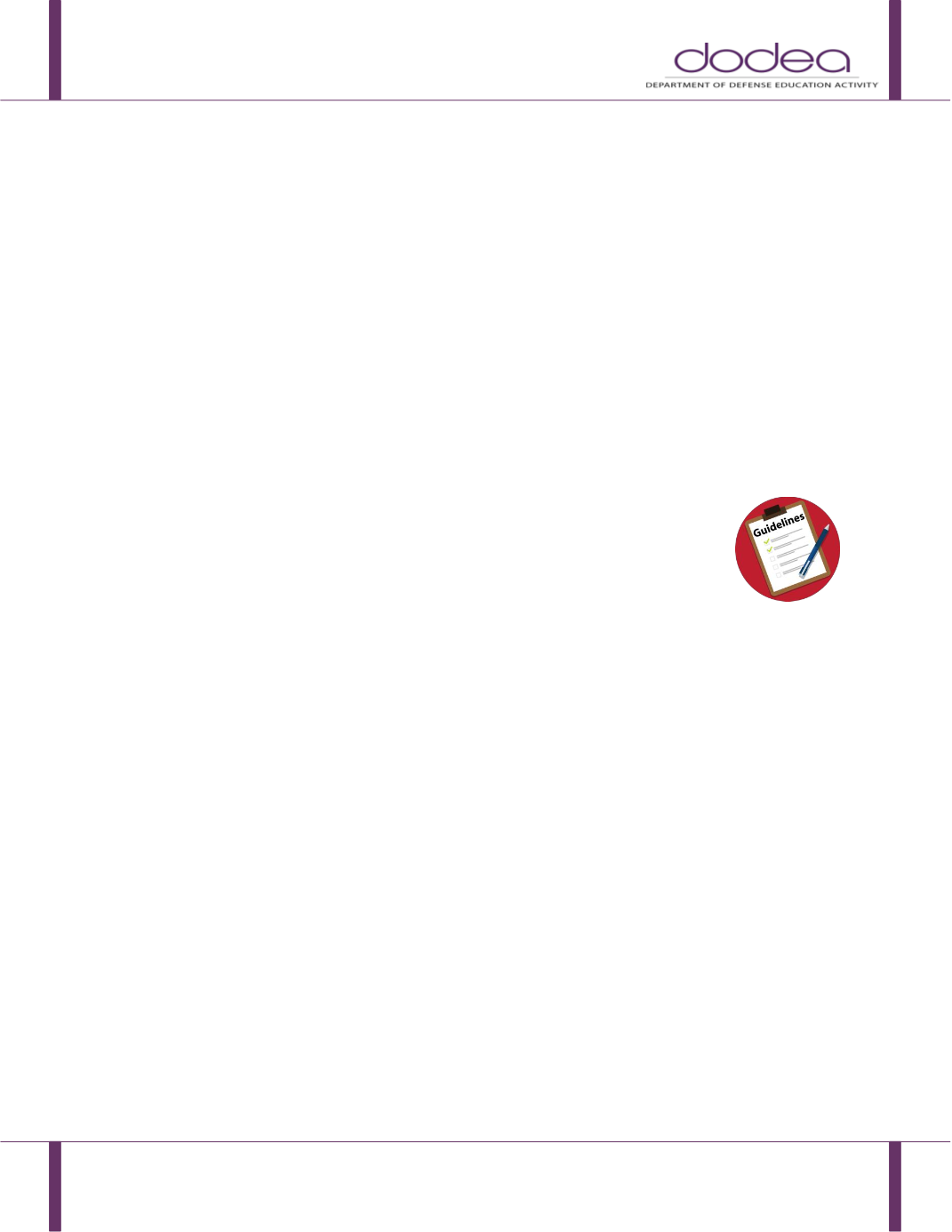

1342.12 Companion
July 12, 2017
Page 139
Data analysis helps to determine patterns associated with the behaviors and hypotheses for the
functions of the behaviors as well as providing input for the development of a behavior intervention
plan.
Behavior Intervention Plan
After collecting data on a student’s behavior and developing a hypothesis on the function of the
behavior, the CSC develops or revises a behavior intervention plan. The plan identifies all essential
components to address the problem behaviors which may include:
positive strategies and reinforcements,
skills to be instructed,
program, environmental, and/or curricular modifications, and
supplementary aids/ supports.
The behavior plan must indicate a specified length of time and the type of data to be collected in order
to assess the effectiveness of the interventions and to take appropriate steps to review and revise as
necessary.
Summary of the Guidelines for Developing a Behavioral Intervention Plan
Prioritize behaviors based upon the seriousness and/or significance of impact.
Document the conditions that trigger the behavior and the suspected
purpose(s) (e.g., task avoidance).
Develop appropriate interventions and reinforces aligned with student’s
current levels of performance.
Teach replacement behaviors.
Implement changes in setting, environment, or schedule.
Assess the practicality of implementation.
Review the BIP as needed but, at minimum, at the annual IEP meeting and at the beginning of
each school year.


















